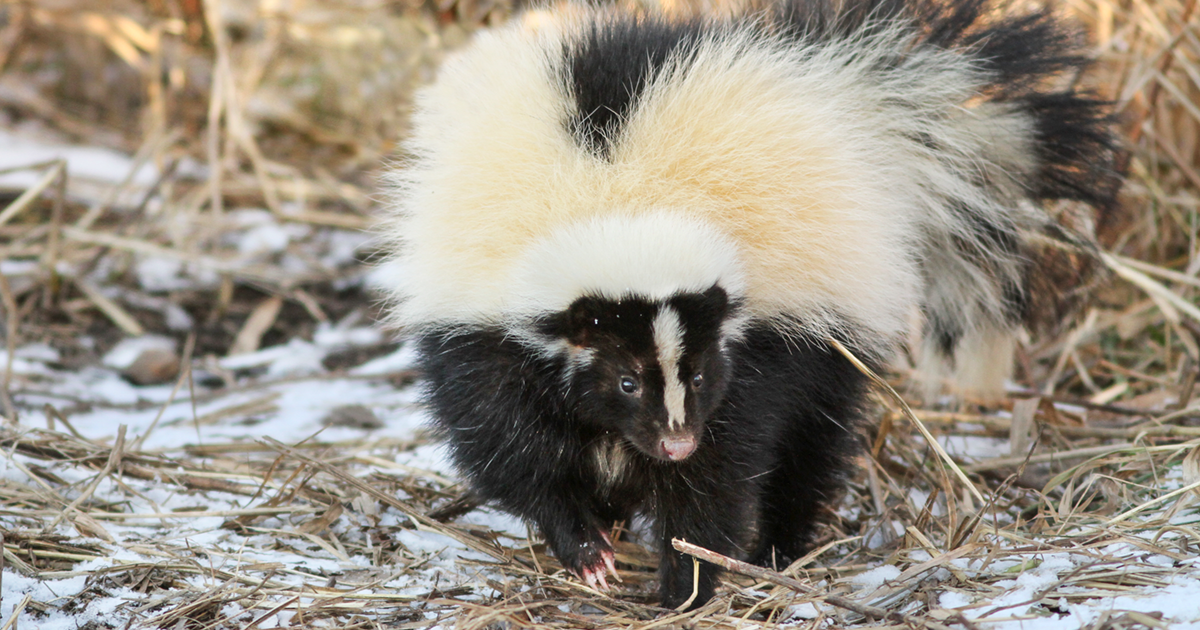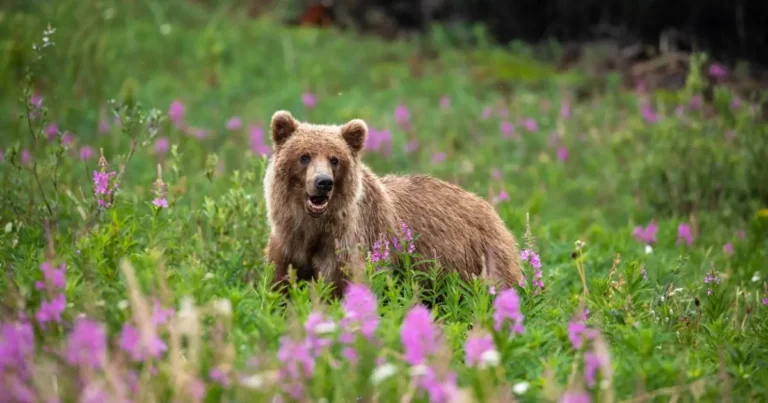
Skunks may seem more common during the mid-to-late weeks of February, and that may mean encounters with people and pets increase. However, this increased activity isn’t about humans: it’s about love.
Striped, hog-nosed and hooded skunks are in their prime mating season, and since they are polyamorous (more than one partner), they get… busy. This means seeing, hearing or smelling skunks through your yard could be more common for a few weeks, as well. Here’s a few simple tips to help keep you and any furry companions at your home smelly sweet, and to allow the skunks to get to work:
- Announce your presence. Whether you’re going out to flip a veggie burger on the grill or looking for a long-lost-to-the-backyard tool, letting everyone in your yard know that a human is on their way out can prevent surprises.
- Lights and leashes. Turning lights on (or flickering them off and on before going out) can alert wildlife to an incoming presence, as well. Particularly if you have a dog who may be curious about ‘spicy squirrels’, you can also consider taking them into a yard on a leash. This isn’t to say keep them on a leash in a fenced yard, but can give skunks and other wildlife a few extra seconds to clear the space before they barrel through.
- Get to know the neighbours. Is it skunks? Is it squirrels? Is it a particularly smelly cat? Sometimes our suspicions about who’s been visiting our homes or properties in the evenings can be biased or just outright wrong. Utilizing a trail camera (or security camera on a motion trigger) can help you identify who’s stopping by. In the case below, a trail camera identified that not just one skunk was living under a shed, but that they had a morphologically distinct visitor.
4. Clean up attractants. Skunks, like any other wildlife, will be attracted by human foods and smelly items like barbecue grease traps, containers with food scraps in recycle bins, pet food, and so on. By cleaning up attractants regularly you will reduce the likelihood of skunks visiting – and potentially making a den site – on your property.
While it may seem like a good idea to block any potential den sites that skunks may want to access, this time of year it can be dangerous as it’s hard to tell if any animals are inside the dens (trail cameras can help). However, very soon, these sites may also be home to newborns, making it vital that they are given space. If you require assistance, please check out our article on how to find a humane wildlife removal company.
Love skunks? Let us know on our social media channels! Share trail cam images, photographs, artwork or crafts of skunks and tag us @furbearers on Instagram or locate us on Twitter and Facebook here.
